Tuesday, December 27, 2016 10:16:05 PM MST
In 1742 Mary Eales specifially mentions “tin ice pots” I have NOT found any record of these made of copper. No use of copper in literature or inventories. There are no surviving examples in copper either. Only pewter examples still exist as the tin versions have all been “used up”.
This is a hard subject to research because there are so many names or ways of spelling it. There is also confusion because a Sabotiere is a maker of wooden shoes and also the name of a country clog dance, even mentioned by Fyodor Dostoevsky.
Sabotiere appears to be the most common apearing in:
1770 The Court and Country Confectioner: Or, The House-keeper’s Guide; … by Mr. Borella
1772 The Lady’s Magazine Or Entertaining Companion for the Fair Sex …, Volume 3 called it a Sabotiere
and in 1800, Hannah Glasse also calls the “icing pot” a Sabotiere.
Sometimes an “r” is added as in:
1768 L’art de bien faire les glaces d’office ou les vrais principes pour congeier tous les rafraichissemens by Le Clerc
1775 L’art du distillateur liquoriste: contenant le bruleur d’eaux-de-vie, le … by Jacques-François Demachy

It was spelled with an “a” and an “o” in 1844 Chareau, Paul-Benjamin. Science du bien vivre ou monographie de la cuisine, envisagée sous son aspect physique, intellectuel et moral: guide de la maîtresse de maison, suivie de mille novelles recettes … du service de la table. Paris: Martinon, 1844.
Sabotiere is also defined as “the dance of the people in wooden shoes” in the 1849 General English and French Dictionary newly composed from the English … By Alexandre Spiers. That same book defines sarbotiere as sherbet pail or ice pail.
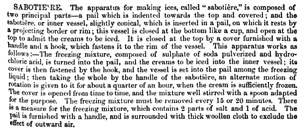
Though the name is difficult the image is easy to understand.
Ure, Andrew. A Dictionary of Arts, Manufactures, and Mines. New York: Appleton, 1858.
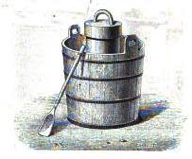
Charton, Edouard, Eurayle Cazeaux, Eugène Best, Charles Mayet, Charles Forementin, Émile Fouquet, Ernest Beauguitte, and Louis Fouquet. Le Magasin pittoresque. Paris: Jouvet & cie, 1833.

Audot, L.-E. La cuisinière de la campagne et de la ville, ou nouvelle cuisine économique. Paris: Audot, 1851.
This account specifies they should not be made of tin.
Tinplate will rust and that is why there are no surviving examples so the version I make has a double coating of tin.
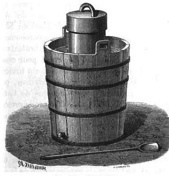
Tissandier, Gaston. L’eau. Paris: Hachette, 1878.
They are often shown with the spaddle so my version is sold with a wooden spaddle.
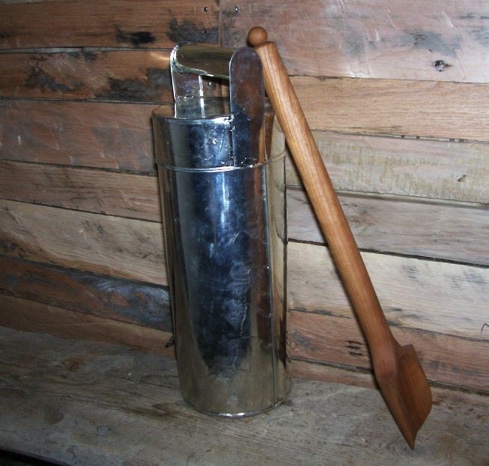
Most of the images have an arched handle and are presumed to be pewter but the Diderot image could be tinplate.
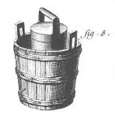
They are available for sale here.

Am interested in a sabotiere. one on the small size, not too large. What do you have available? and price as well.
By the way, we have been using the baking sheets for our new oven I bought from you two years ago, and they are working out just fine at Historic New Bridge Landing. thank you
We do have one available on the website, it holds up to 4 quarts.
https://www.hotdiptin.com/product/cream-machine/